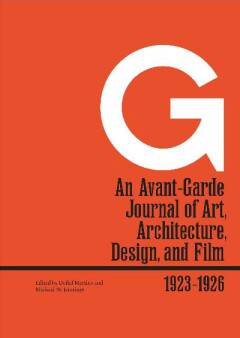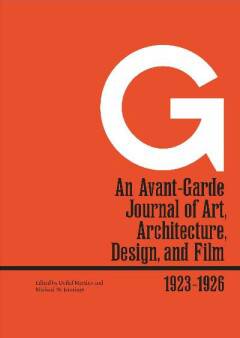
- Afhalen na 1 uur in een winkel met voorraad
- Gratis thuislevering in België vanaf € 30
- Ruim aanbod met 7 miljoen producten
- Afhalen na 1 uur in een winkel met voorraad
- Gratis thuislevering in België vanaf € 30
- Ruim aanbod met 7 miljoen producten
Zoeken
G - An Avant-Garde Journal
of Art, Architecture, Design and Film, 1923-1926
Michael Jennings, Detlef Mertins
Hardcover | Engels
€ 34,95
+ 69 punten
Omschrijving
The journal "G," launched at the suggestion of the founder of the De Stijl movement, Theo van Doesburg, and produced by the artist and filmmaker, Hans Richter, was published in Berlin between 1923 and 1926, when the city was an epicentre of the European avant-gardes. Drawing together painting, sculpture, photography, film, architecture, engineering, industrial design, poetry, fashion, and urbanism, it sought to counter conservative forces that would restrict the development of a new and vital culture. Contributions were published in the journal from leading avant-garde figures including Mies van der Rohe, El Lissitsky, Tristan Tzara, Man Ray and Theo van Doesburg. The radicalism of the ideas published within "G" were matched by its design and typography. For the first time the journal is translated and reproduced in full, so that its vivid, polemical language is set alongside its bold and innovative layouts that have lost none of their visual impact, capturing the dynamism and excitement of this pivotal moment in modernist history.
Specificaties
Betrokkenen
- Auteur(s):
- Uitgeverij:
Inhoud
- Aantal bladzijden:
- 320
- Taal:
- Engels
Eigenschappen
- Productcode (EAN):
- 9781854379542
- Verschijningsdatum:
- 9/02/2011
- Uitvoering:
- Hardcover
- Afmetingen:
- 254 mm x 178 mm
- Gewicht:
- 1000 g

Alleen bij Standaard Boekhandel
+ 69 punten op je klantenkaart van Standaard Boekhandel
Beoordelingen
We publiceren alleen reviews die voldoen aan de voorwaarden voor reviews. Bekijk onze voorwaarden voor reviews.











